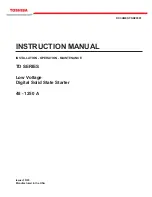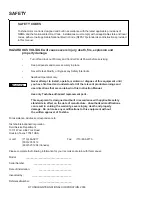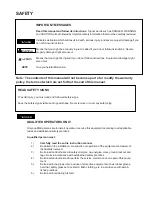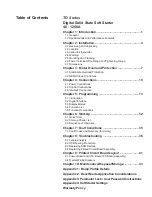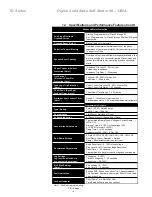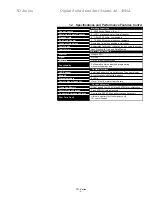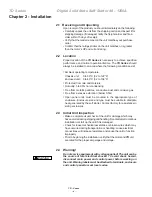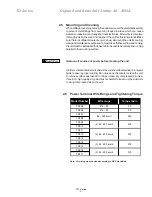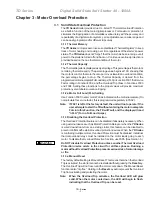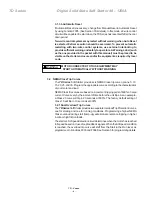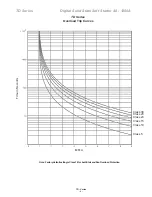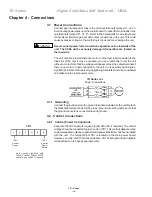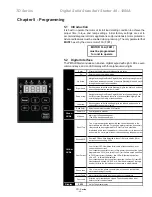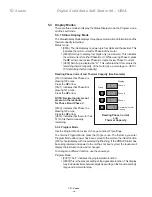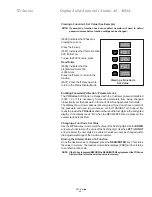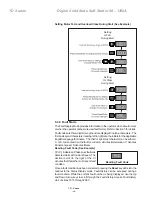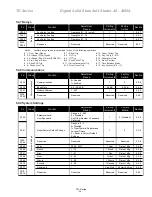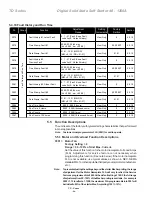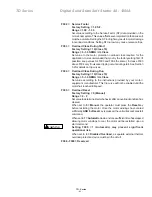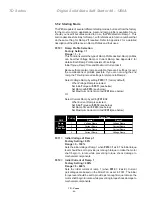
TD - Series
- 7 -
TD Series
Digital Solid State Soft Starter 48 - 1250A
Chapter 3 - Motor Overload Protection
3.1 Solid State Overload Protection
The
TD Series
Starter provides true U.L. listed I
2
T Thermal Overload Protection
as a built-in function of the main digital processor. For maximum protection it
simulates the tripping action of a bimetallic overload relay, with the accuracy and
repeatability of a digital control system, yet is adjustable over a wide range and
can be easily programmed for different trip curves.
3.1.1 Thermal Memory
The
TD Series
microprocessor uses a sophisticated “Thermal Register” to keep
track of motor heating and cooling over time regardless of the starter’s power
status. The
TD Series
does not “forget” that the motor has been running even if
power to the starter is turned off and back on. Continuous overload protection is
provided based on the true thermal condition of the motor.
3.1.2 Thermal Capacity
The Thermal Register is displayed as a percentage. This percentage is the motor’s
remaining thermal capacity. The percentage value begins at 100, showing that
the motor is cool. As the motor heats up or moves toward an overload condition,
the percentage begins to drop. The Thermal Capacity is derived from the
programmed motor nameplate Full Load Amps (FLA) in Function F001, the Service
Factor rating in Function F002, and the Overload Trip Class in Functions F003
and F004. Setting these functions to the proper values will provide maximum
protection yet eliminates nuisance tripping.
3.1.2.a Motor Full Load (FLA) Setting
Use Function F001 to enter motor FLA as indicated on the motor nameplate. (Do
not calculate for service factor, this is programmed separately in F002).
Note:
If F001 is left at the factory default, the unit will not operate.
I
f the
user attempts to start the TD without entering the motor nameplate
FLA into this Function, the TD will Fault, and the display will read
“nFLA” (for no Full Load Amps).
3.1.3 Disabling the Overload Protection
The Overload Protection feature can be disabled if absolutely necessary. When
using external devices such as Motor Protection Relays or when the
TD Series
is wired downstream from an existing starter, this feature can be disabled to
prevent conflicts with external overload protection devices. When the
TD Series
is controlling multiple motors, Overload Protection must be disabled. Individual
thermal overload relays must be installed on the motor leads going to each
motor. To disable the Overload Protection function, use F005. (See Section 5.)
Do NOT disable Overload Protection unless another Thermal Overload
Protection device exists in the circuit for all three phases. Running a
motor without Overload Protection presents serious risk of motor damage
or fire.
3.1.3.a Manual Reset
The factory default setting is Manual Reset. This means that when the Overload
Trip is activated, the starter cannot be restarted without pressing the
Reset
key.
The Overload Trip will not reset until the motor cools down. The Manual Reset
function is also “trip free”. Holding in the
Reset
key will not prevent the Overload
Trip from activating and protecting the motor.
Note:
When the Overload Trip activates, the Overload LED will glow
solid. When the motor cools down, the LED will begin to flash,
indicating that the Overload Trip can be reset.
WARNING

